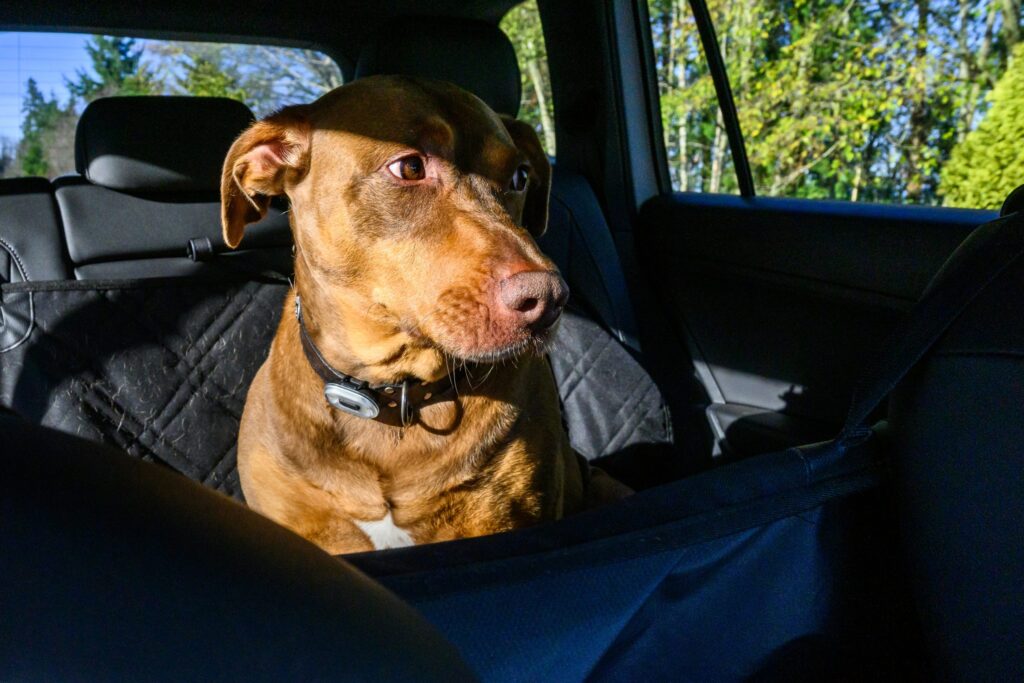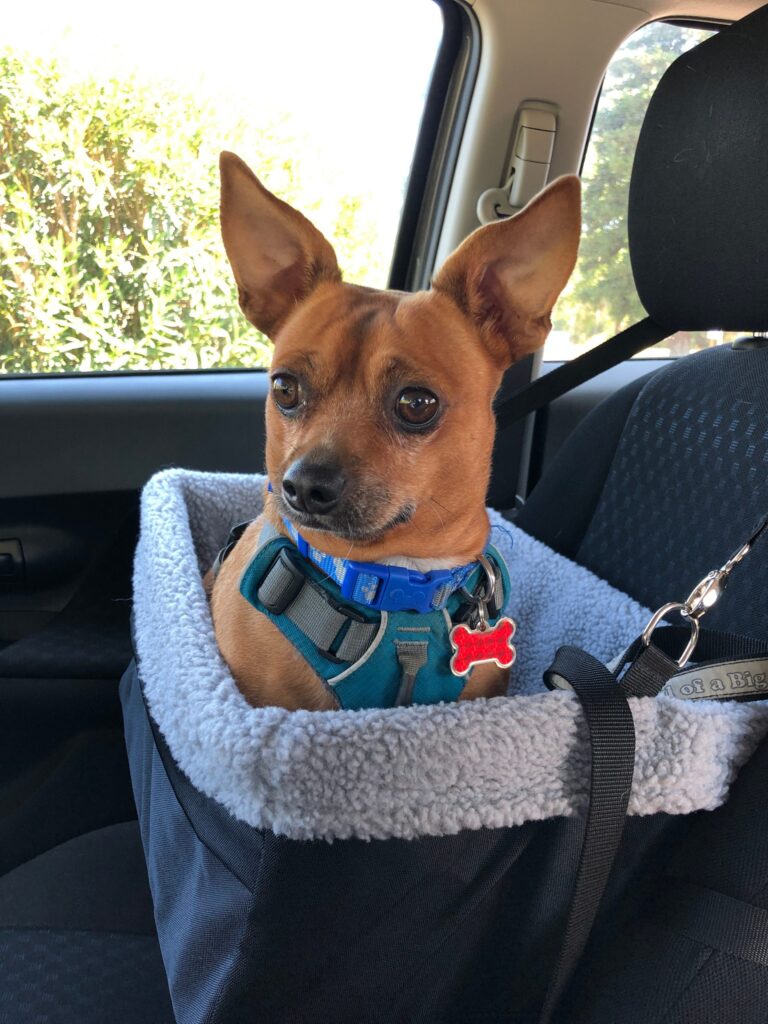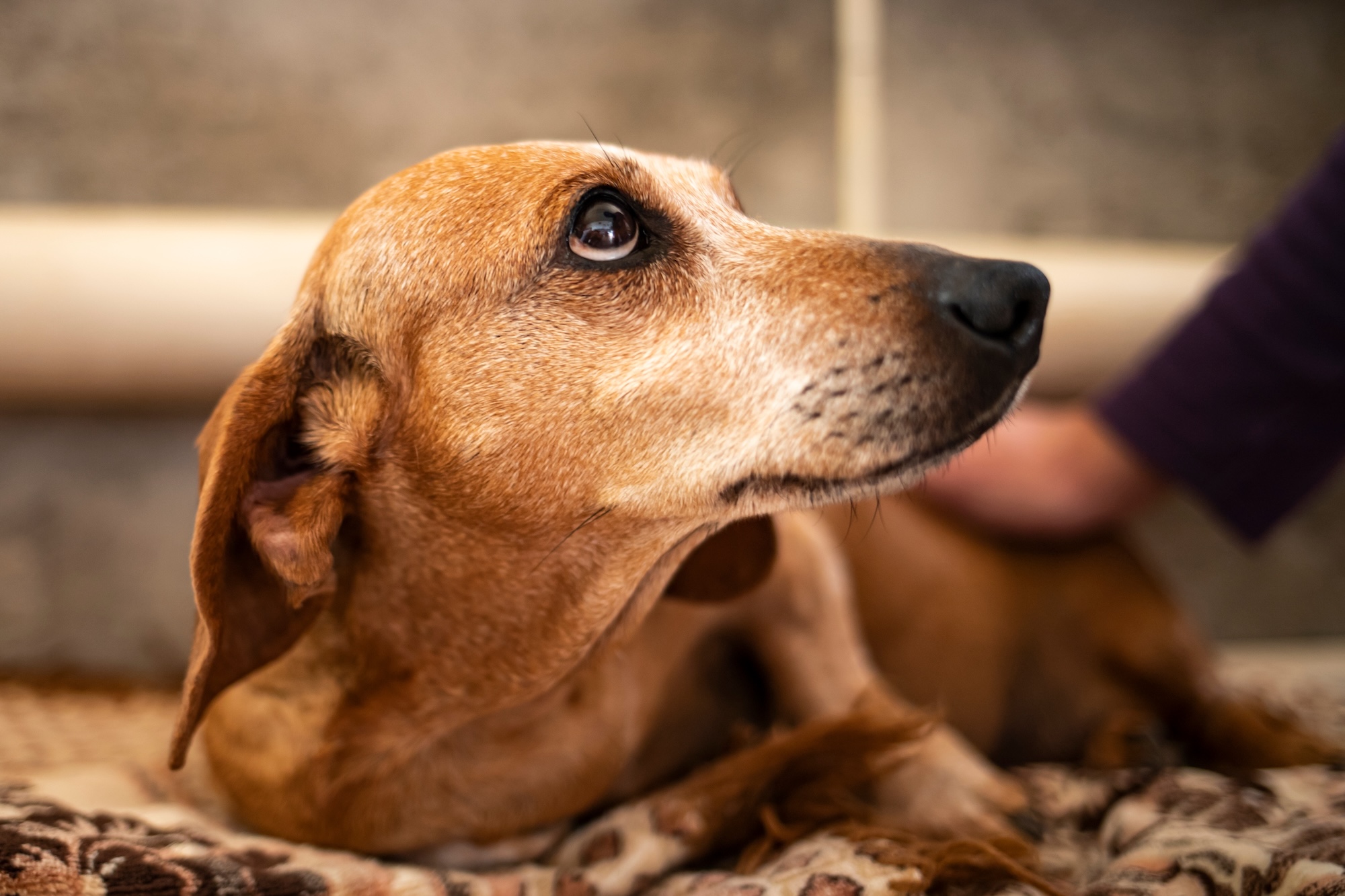There’s nothing quite like hitting the road with your canine companion riding along, excitedly taking in all the new sights and smells. Unless, that is, your dog gets carsick.
Instead of experiencing the pure joy of a new adventure, your dog might whine, drool, and vomit when in the car, making it a miserable experience for all parties involved—and making it more likely that your dog will get left out of some great potential together time. Carsickness, however, is treatable and even preventable.
We tend to think that all dogs love going for car rides, but carsickness is surprisingly common among dogs. In one study, researchers found that 25% of dogs who had ridden in cars had experienced some kind of restlessness, 24.5% experienced hypersalivation, and 18% had experienced vomiting while riding in the car.
Here’s what you need to know about helping a carsick dog feel better, and setting your dog up for vehicular victory.
Signs of carsickness in dogs
Carsickness often ends in vomiting, but its signs also include the following:
- Excessive yawning
- Drooling
- Licking lips excessively
- Restlessness
- Diarrhea
Some of these signs, such as excessive yawning and licking lips, are also signs of anxiety, so even if your dog isn’t vomiting, they may be telling you that they’re having trouble in the car. If you see these signs, you should try to decode and address the source of the stress. Use context clues to figure out if they’re feeling carsick: does it happen every time you’re in the car, no matter the length of the trip? Where in the car does your dog ride and how? (i.e., do they stand, sit, lie down? Where in the car are they located?)
Why does my dog get carsick?

There are physiological reasons a dog may get carsick. Motion sickness, as a physical phenomenon in healthy people and dogs, is most likely caused by a disturbance of the inner ear system that controls balance and tells the brain where a body is in space.
Just as carsickness is more common in young people than in adults, the ailment is more common in puppies than in adult dogs. In puppies, it may have to do with the inner ear not being fully developed. Carsickness in adult dogs could be caused by an infection or other disorder of the inner ear, or by some medications.
But carsickness can also be a psychological phenomenon, an anxiety response to riding in the car. Some dogs may associate the car with bad experiences. For example, if you only ever load your four-legged friend into the car when taking them to the vet, they’re more likely to view car rides as negative experiences, causing stress and exacerbating symptoms of carsickness.
Or dogs may associate the car with being left, or with their people leaving. A puppy or dog may also just be overwhelmed by a combination of the noise, stress, and temperature, combined with the motion of the vehicle.
The good news is that whether it’s physiological or psychological, there are ways to treat and even prevent carsickness.
How can I help prevent carsickness in my dog?
Depending on the root cause of your dog’s carsickness, you can take a number of approaches. It’s a good idea to step back and try to determine if and why your dog has a troubled relationship with the car. And if you have a new puppy or dog, take some steps to ensure that, right off the bat, the car is associated with fun, not fear.
Desensitization and positive socialization
While you should definitely be including car rides in your puppy or dog’s socialization plan from the minute you bring them home, it’s never too late to start.
One of the best ways to make car rides enjoyable for a new, or an anxious dog is to make the car a happy place. Start out by bringing your dog to the car and giving them treats and/or praise while they look at it. Don’t try to put them inside; simply let them look.
Once they start to associate seeing the car with a positive experience, you can build on that foundation. Put them in the (stationary) car with the door open and give them treats and/or praise and pets. Let them get out when they’re ready—don’t try to force them to stay in the car. From there, you can continue this practice for a few minutes every day, slowly building the amount of time they stay in the car. Eventually, you can close the door and continue administering the treats and/or praise. From there, you can practice starting the car, and eventually taking short drives. It shouldn’t be long before they’re ready for road trips with their people.
If you think there are other things at the root of your dog’s carsickness, consider the following steps and solutions.
Limit food intake
While this one might sound obvious, if your dog is vomiting or having diarrhea in the car, limit their food intake whenever possible for at least 3 hours and up to 12 hours before you go for a ride. Less food in the digestive system means less to expel—and less mess to clean.
Use a car seat or other restraint

In humans, looking forward and/or at a fixed point can significantly decrease feelings of carsickness. So, consider using a seat restraint that keeps your pup safely in place, so they can’t pace or move around in a way that will only exacerbate their illness (using a restraint is a good idea even for dogs who enjoy the ride).
Many dog owners sing the praises of booster seats, which both keeps their pups still and facing forward, and can elevate them off the car seat itself, reducing the bumpiness of the ride. There are tons of car-seat options available, many of them designed specifically to help reduce motion sickness. You can also consider having your dog travel in a crate they find comfortable.
Medication
If, for example, you have a puppy who gets motion sick due to an underdeveloped inner ear, medication may be recommended to manage their symptoms until their sensory organs are developed enough to stop the motion sickness. This is also a good temporary option for older dogs who get anxious—while they’re relearning to enjoy car rides.
Some human medications, like Dramamine, are used for dogs experiencing symptoms such as nausea (the telltale signs of which are typically salivating and drooling a lot) and dizziness. Your vet may also recommend Maropitant citrate (Cerenia), an anti-nausea medication for dogs which lasts about 24 hours.
There are also over-the-counter products like Adaptil or Zylkene which are designed to quell anxiety (though not motion sickness per se) that may be used when it’s time to hit the road. As always, consult your vet before giving your dog any medication, and to be sure to follow their guidance on dosage.
Herbal and other treatments
Some vets recommend—and many dog owners swear by—ginger, whether minced or in powder, tablet, or tea form (just make sure it’s made from pure, real ginger, and not a processed product like ginger ale). Research on humans has shown that ginger is an effective anti-nausea and anti-vomiting agent, and the benefits may also apply to dogs. Plan on giving your dog a very small amount of ginger (no more at ¼ teaspoon for small dogs and ¾ teaspoon for larger dogs) least 30 minutes before a car ride. Start slow with about half the recommended amount at first. Ginger may lower blood sugar and blood pressure, so check with your vet about any conditions like diabetes before feeding ginger.
Again, before administering any herbal or medicinal substance, consult your vet about whether this option is right for your pup.
Make the car ride more comfortable—literally
There are a few other simple ways to decrease the chances of your dog’s brain going haywire when in a moving car, and they’re all relatively accessible.
Keep things cool: Ideally, keep the windows open to provide fresh air, and to balance the air pressure inside and outside the car. One caveat here though, is that for some dogs being blasted by outside air may aggravate motion sickness, and some dogs may just get too excited by the sensory overload. So monitor your dog to see what they respond to.
Good smells and activities: Bring an old t-shirt or blanket that smells like you to make the car smell (and feel) familiar and safe. You can also bring along an extra-special toy that they only get in the car (just make sure it’s not anything that may contribute to tummy troubles like rich treats).
With these tips, you and your pooch should be well on your way to enjoying life on the road.




